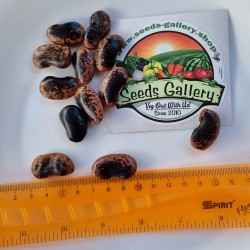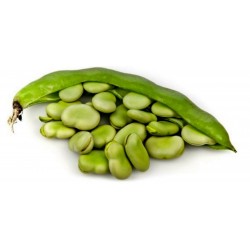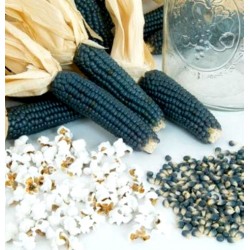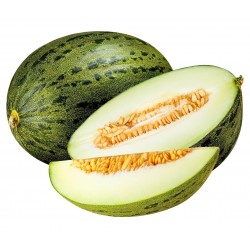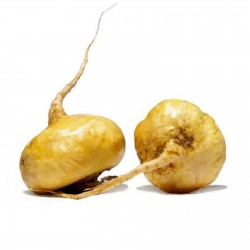
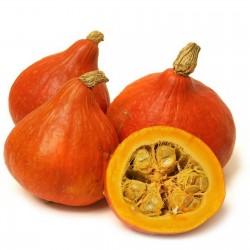
Japanese Hokkaido Squash Seeds
Prijs
€ 1,95
SKU: VG 3
Seeds Gallery Com,
5/
5
<h2><strong>Japanese Hokkaido Squash Seeds</strong></h2>
<h2><span style="color: #ff0000;" class=""><strong>Price for Package of 10-15 (2g) seeds.<br /></strong></span></h2>
<div>Red kuri squash (katakana: ウチキクリ) is thick-skinned orange colored winter squash that has the appearance of a small pumpkin without the ridges. Inside the hard outer skin there is a firm flesh that provides a very delicate and mellow chestnut-like flavor. Red kuri squash is a cultivated variety of the species Cucurbita maxima. The variety is listed as follows: C. maxima Duchesne ssp. maxima convar. maxima 'Red Kuri'. Other varieties of this subspecies include 'Hokkaido', 'Red Hokkaido' and 'Sweet Meat' squashes.</div>
<div> </div>
<div>History</div>
<div>It is generally believed that all squash originated in Mesoamerica, but may have been independently cultivated elsewhere, albeit later.</div>
<div>Red kuri squash is commonly called Japanese Squash, Orange Hokkaido Squash[5], Baby Red Hubbard Squash, or the Uchiki Kuri Squash. In Japan, the word kuri may refer to either the squash discussed in this article or to Japanese chestnuts. In France it is called Potimarron, and in the United Kingdom it is commonly called Onion Squash.</div>
<div>Primarily grown in Japan, California, Florida, Southwestern Colorado, Mexico, Tasmania, Tonga, New Zealand, Chile, Provence and South Africa, red kuri is widely adapted for climates that provide a growing season of 100 days or more. Most of the California, Colorado, Tonga and New Zealand crops are exported to Japan.</div>
<div>Red kuri squash consumption has increased since squash appreciation has increased in cuisines worldwide. This is because of the availability of winter and summer varieties throughout the year. Healthier eating has also increased this nutritious vegetable's popularity.</div>
<div>Characteristics</div>
<div>This hardy squash grows to maturity in full sun and is drought tolerant. Each vine produces multiple teardrop-shaped fruits, usually three. The squash matures after about ninety days after blooming.</div>
<div>The squash is hard shelled winter variety with firm yellow flesh. The flesh often has a green tint under the seeds.</div>
<div>Culinary uses</div>
<div>Red kuri prepared for cooking.</div>
<div>Full-flavored, sweet and very fond of butter and fresh herbs, red kuri squash is a perfect ingredient for a variety of soups, stews and casseroles. Make cakes, quick breads, muffins, cookies and pies with its succulent nutty-tasting flesh. Excellent baked, boiled, microwaved, steamed, sautéed or fried, this special squash adds sweet flavor and texture to stir-fries. Its seed cavity is ideal for stuffing.</div>
<div>Nutrition</div>
<div>Red kuri squash is a good source of fiber. It also provides vitamin A and vitamin C, some of the B vitamins, calcium, potassium, iron, riboflavin and thiamine. Low in calories and sodium, this deep-colored squash also contains beta-carotene.</div>
<div>FRESH SEEDS</div>
<script src="//cdn.public.n1ed.com/G3OMDFLT/widgets.js"></script>
VG 3 (2g)





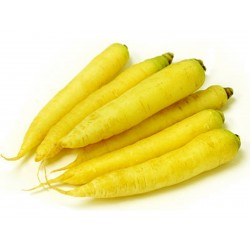
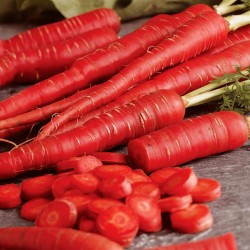
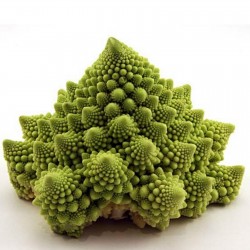
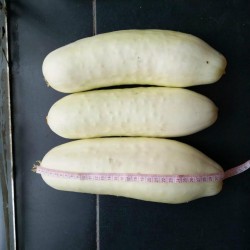

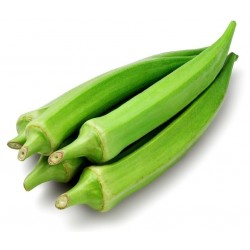
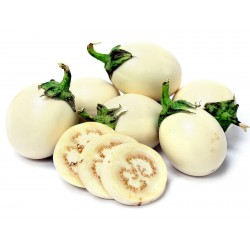
.png)

